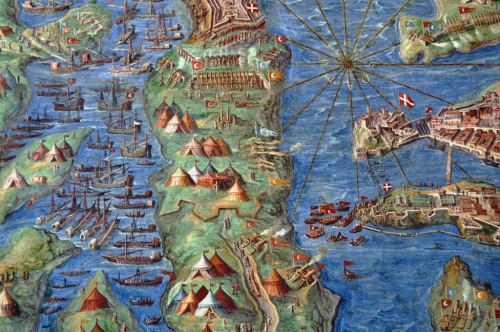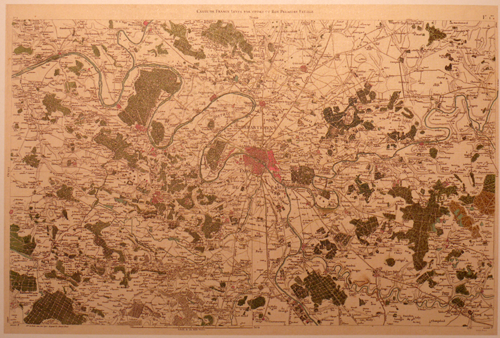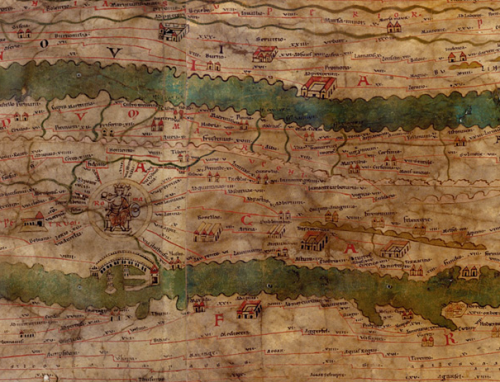 After the discovery of the Americas, numerous maps were made by the various sefaring nations of the period, most notably the Spanish and Portuguese. Possibly the most intriguing and, certainly, one of the most elegant maps was made not by the obvious cartographers but by a Turk, Piri Re’is. Only a portion of the map remains. At one point it would have included the whole world as seen by the Ottomans but only the western segment has survived. This alone, though, tells a remarkable cartographic story.
After the discovery of the Americas, numerous maps were made by the various sefaring nations of the period, most notably the Spanish and Portuguese. Possibly the most intriguing and, certainly, one of the most elegant maps was made not by the obvious cartographers but by a Turk, Piri Re’is. Only a portion of the map remains. At one point it would have included the whole world as seen by the Ottomans but only the western segment has survived. This alone, though, tells a remarkable cartographic story.
The map is significant as being the only 16th century map to display the Americas in its correct longitudinal position relative to Africa. As a portolan chart it is used predominantly for navigation. The coastal detail is impressive and the ocean is marked with numerous compass roses, rhumb lines (lines of constant bearing) and scale bars. The map is embellished with beautiful tall ships as well as many vignettes depicting indigenous people, flora and fauna, towns and settlements. The colours bring the map to life with careful shading of the coastline allowing it to stand proud in a visual sense and the use of red and blue alternating rhumb lines acting as spokes away fro the compass roses. Colour, generally, is well balanced, used sparingly but effectively as a differentiating tool.
 The labelling is particularly impressive and illustrates a compilation of collective knowledge derived from 20 maps used as sources. Maps from Alexander the Great, Ptolemy, Columbus and Portuguese explorers all played a part in the design of the map which reminds us that maps need not be entirely original. What is important, however, is to acknowledge the sources which this map does in its copious notes in the lower left.
The labelling is particularly impressive and illustrates a compilation of collective knowledge derived from 20 maps used as sources. Maps from Alexander the Great, Ptolemy, Columbus and Portuguese explorers all played a part in the design of the map which reminds us that maps need not be entirely original. What is important, however, is to acknowledge the sources which this map does in its copious notes in the lower left.
The coastline of the Americas continues south and along the bottom. Could this be Antarctica or simply an artistic extension of the unknown southern tip of the Americas. Of course, it’s intriguing to wonder what the rest of the map might have looked like. Piri Re’is himself was a distinguished naval captain who rose to the post of Admiral of the Ottoman fleet. He won numerous battles and surveyed, mapped and wrote the famous Kitab-I Bahriye (Book of Navigation) in 1521. He was executed in 1553 for failing in his attempt to defeat the Portuguese in the Persian Gulf. He left a remarkable cartographic legacy with this map.























